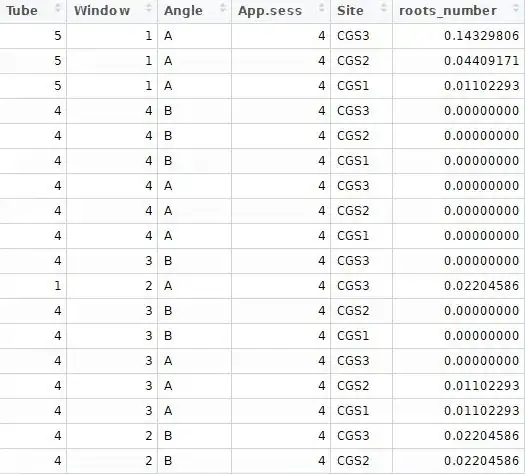I am aiming to see if there is any difference of root production (as new roots) between forests of different ages (site 1 =10 years, site2 = 22 years, site3 =58 years).
As experimental design, I have 7 tubes per sites. In each of the tubes, I have for 4 depths. In each of the depths, I measure the number of root at 80 and 95 degrees direction in the soil. And I repeated those measurements 3 times.
My design is hence: measurement time (3) x site (3) x tubes (15) x depth (4) x angles (2). In total I have 504 datapoints.
Therefore, I have the angle nested into depth, nested into tubes, nested into site, and in addition I have a repeated measurement.
I would like to know if my root number is different across sites, and also I would like to know if the root number is different at depth for each site.
I am hesitating between the option below on how to write my linear mixed model in R. In addition, can be a fixed effect also a nested random effect- if not why? do you have any litterature on that?*
Model1 = lmer(Root number ~ Site * Depth + (1|Tube)+ (1|MeasurementTime)+ (1|Angle), data = DataprodF)
--> Model 1 return a singular fit, why? is it because I don't have enough data?
Model2 = lmer(Root number ~ Site * Depth + (1|Tube/Angle)+ (1|MeasurementTime),
data = DataprodF)
--> Model 2 return a singular fit
Model3 = lmer(Root number ~ Site * Depth + (1|Site/Depth/Tube/Angle)+ (1|MeasurementTime), data = DataprodF)
--> Model 3 return a singular fit
A sample of my data : All except root number are as factor. App.sess is measurement time (after 4, 6 and 8 months). Angle is A= 80 degrees and B =90 degrees.
Thanks a lot for your help!
